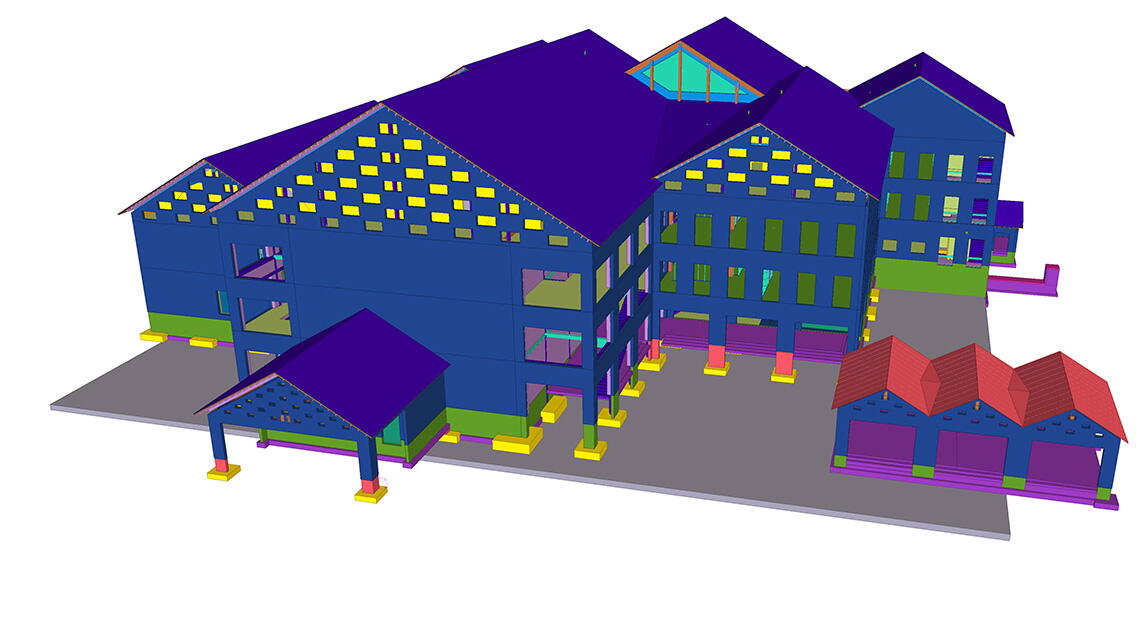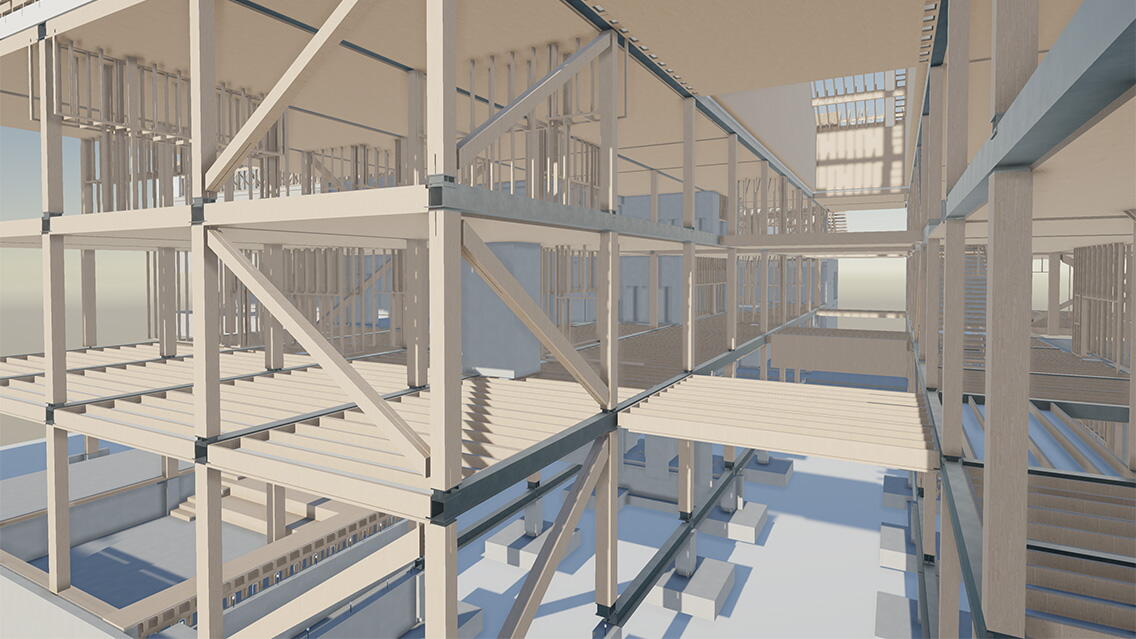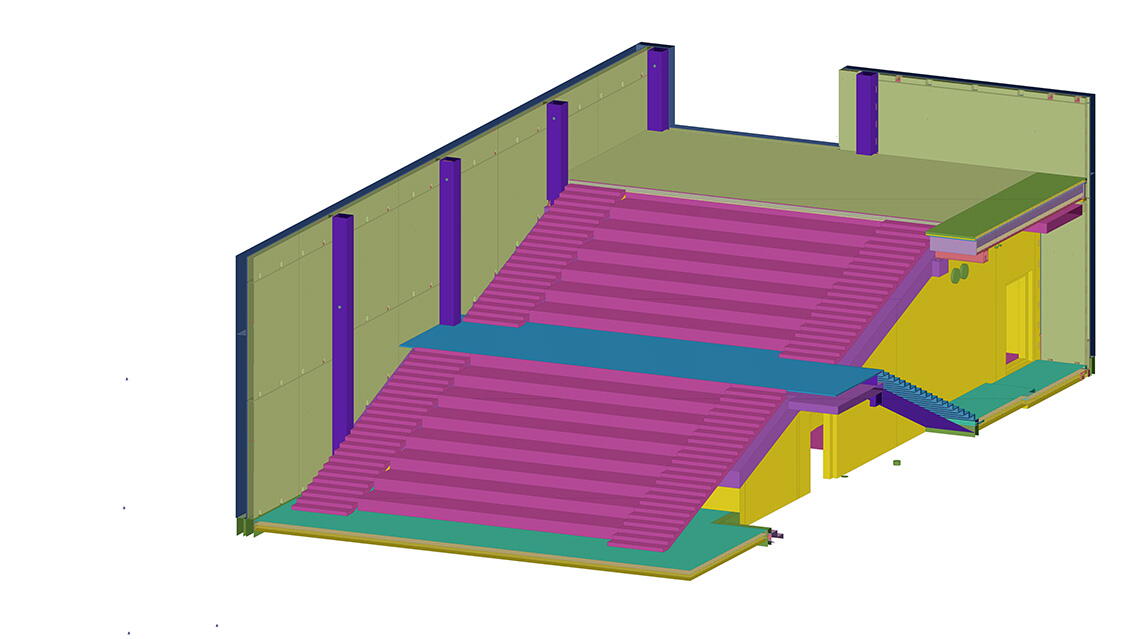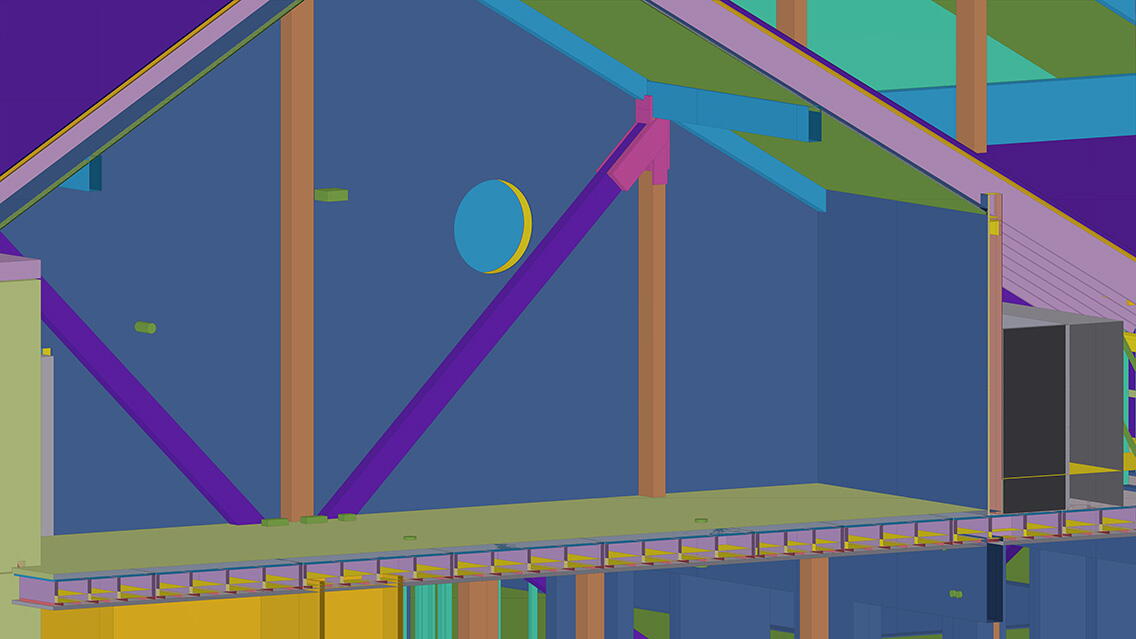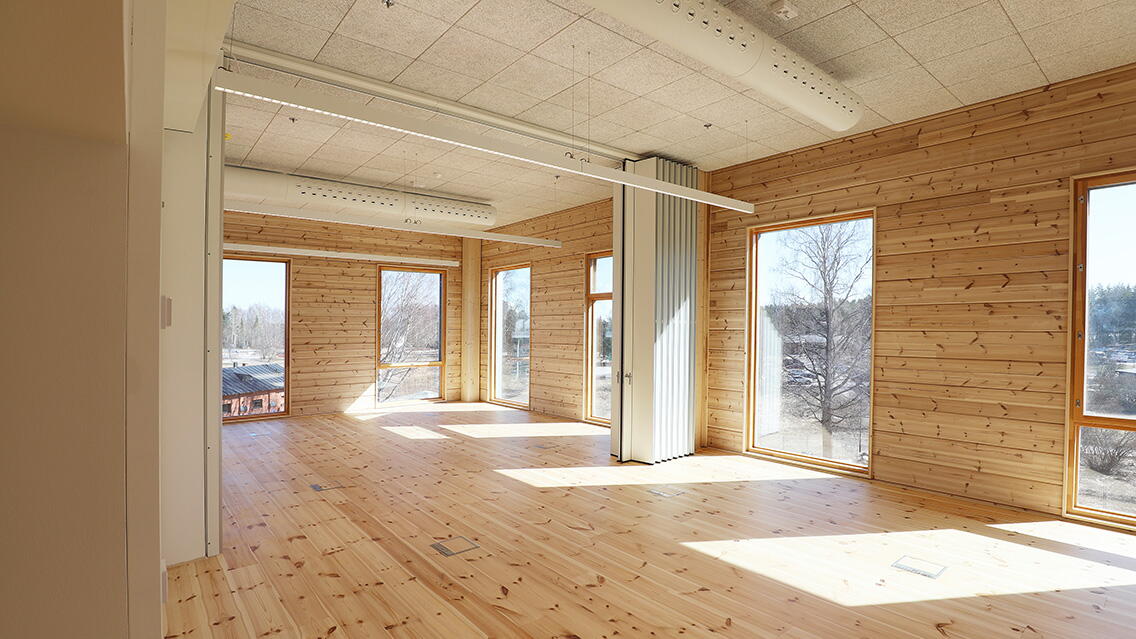The site is a log high school and multi-purpose building to be built for the municipality of Tuusula on the old barracks site in Hyrylä, Tuusula, Finland. The building will bring together Tuusula's upper secondary school and adult education college, a children's and youth art school, and the Central Uusimaa Music College. The building, described as a living room for local residents, will include open spaces such as a café and a stage.
Monio's hybrid frame consists of laminated log walls, Kerto-Ripa timber floor slabs, glulam beams and diagonals, steel beams, precast concrete elements, and cast-in-place concrete structures. Construction of the approximately 32 million euro, 8 773 brm2 site started in August 2021 and was completed in July 2023. Lujatalo is the project's main contractor. The construction used 23 km of lamellar logs, for which around 4,100 pine trees were cut down and will be replanted in the municipality by high school students in Tuusula. The Tekla Structures model has about 1,000 concrete elements and the same number of wood components, 5,500 logs, and 750 precast assemblies.
Tekla BIM Awards Finland 2023: Special Recognition
In Finland's first 3-storey log building, an extensive collaboration has combined different methods of wood construction in a new way. The project is a hybrid project that uniquely combines different materials. The implementation design has developed an innovative way of combining details of wood and steel structures. The product component suppliers provided their own designs to the project model to be used for the detailing.
The installation of the hybrid frame was planned by simulating the installation sequences, and a 4D model was used to schedule the framework. The weather shelter racks and site plans were modeled. The Trimble Connect AR application and Trimble XR10 virtual helmet were used on-site for inspections of building services. Sustainability was taken into account in diverse ways, in addition to the ecology of the building. The roof has solar panels, and Tuusula High School students are replanting trees in the municipality that were cut down for logs.
Many different materials were modeled in the building information model
Tekla Structures was used to model timber, precast concrete elements, cast-in-place, and steel structures. Timber structures included, for example, load-bearing water-roof structures, timber frames, and intermediate floor elements. In addition, the structural engineer created the main geometry of the log walls using Tekla Structures, and the geometry was also examined with the accuracy of individual logs from the log supplier's 3D reference model.
The structural model included all cast-in-place concrete structures and precast concrete elements with all their fittings. The load-bearing timber elements were modeled with their connectors to ensure compatibility with the associated concrete and steel beams. The timber structures in the attic and the water roofs that were built on site were also modeled in order to take them into account in the quantity take-off and building services coordination. The steel structures of the attic and the ventilation engine room with their connections were designed using modeling.
Clear coordination of the structures through modeling
The structural engineer used 2D drawings and IFC models from other design disciplines to help with the design. The 3D drawings of the log supplier and the steel beam supplier were also used as references in Tekla Structures. The coordination of the joints between the log, timber element, timber beam, and steel beam suppliers was carried out using a data model. The HVAC and kitchen designer also used modeling.
The project made extensive use of data models from different design disciplines, which were regularly coordinated in joint meetings under the guidance of the BIM coordinator. The coordination of structures is clear and natural once the related structures have been modeled. The compatibility of the interfaces can be checked in the model. The components supplied by the different parties were easy to install on-site.
The project began during the global pandemic, so project coordination was conducted almost entirely through remote meetings. Using building information models made this project easier and made it easier to introduce the site to new parties as the project progressed. Thanks to the use of models, even complex solutions could be grasped faster than usual.
Installers made more use of the building information model on site than usual
The challenging installation of the hybrid frame under a weather shelter tent was planned using a Synchro 4D modeled schedule. The software was used to simulate the frame installation sequence with several different orders to find the optimal one. The 4D schedule was used during the implementation phase to guide and coordinate the work of the frame teams and to monitor progress.
During site induction, each worker was instructed on how to download Trimble Connect to a mobile device, how to use the software, and how to request access rights. The installers made particularly good use of Trimble Connect on-site, and Lujatalo received high praise for providing a combination model as a tool for each installer. For many installers, this was their first time using a building information model, and the experience was, without exception, positive.
Trimble HoloLens -AR glasses and the mobile version of Trimble Connect for tablet were used for model installation inspections of building services. The augmented reality software was used to check the design compliance of the building services installations efficiently and accurately.
Finland's first 3-storey log school
Monio is a pioneering project that combines timber construction methods in an open-minded way. The building uses industrial, non-compressible laminated logs on an unprecedented scale. Many structures and details are completely new solutions, as timber and hybrid construction are still new. This has required a lot of design and detailing. The building information model was used extensively during implementation, and, for example, the weather shelter and site plans were modeled.
The aim is to promote the role of timber construction in public buildings
Wood construction has been shown to be more low-carbon than the default concrete construction, and the use of wood also supports sustainable development by acting as a carbon sink for the building. The tree trunk, which absorbs carbon dioxide in the forest, acts as carbon storage throughout the lifecycle of the building, and through sustainable forest management, the planted trees that replace cut-down trees absorb an equivalent amount of carbon dioxide. Future users of the building will plant a corresponding amount of new seedlings, similar to the trees used to make the laminated logs.
Project parties
Main contractor: Lujatalo Oy
Client:Municipality of Tuusula
Main and architectural designer: AOR Architects Oy
Structural engineer: A-Insinöörit Oy
HVAC designer: Sitowise Oy
Electrical engineer: Ramboll Finland Oy
Log delivery and installation: Kontiotuote Oy
Timber element supplier: VVR Wood Oy
Glulam pillar supplier: Versowood Oy
Steel supplier: Nordec Oy
Concrete element supplier: Lujabetoni Oy

